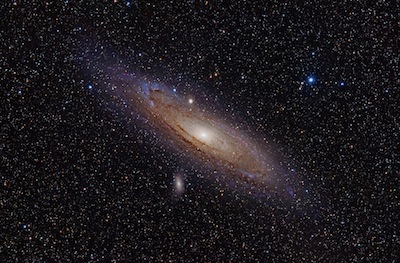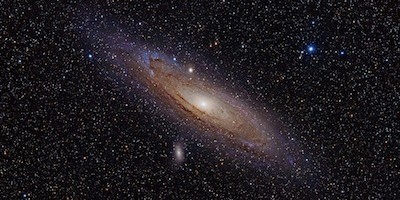
M31, the Andromeda galaxy, may be up to twice as massive as the Milky Way, despite a similar size and structure. (Photo credit: Adam Evans, via flickr)
A new computer simulation has calculated that the mass of our own Milky Way galaxy is about half that of the Andromeda galaxy, one of our closest partners despite previous research.
Using the motion and position of “satellite galaxies” researchers have showing that the Milky Way galaxy has a smaller mass than the Andromeda galaxy. The difference in mass is likely due to ‘dark matter’ that cannot be observed by telescopes.
The study also shows that the rate at which the our local group of galaxies is expanding is consistent with that on the universal scale obtained from cosmic microwave background radiation studies.
Original research paper published in the Monthly Notices of the Royal Astronomical Society on July 29, 2014.
Names and affiliations of selected authors

